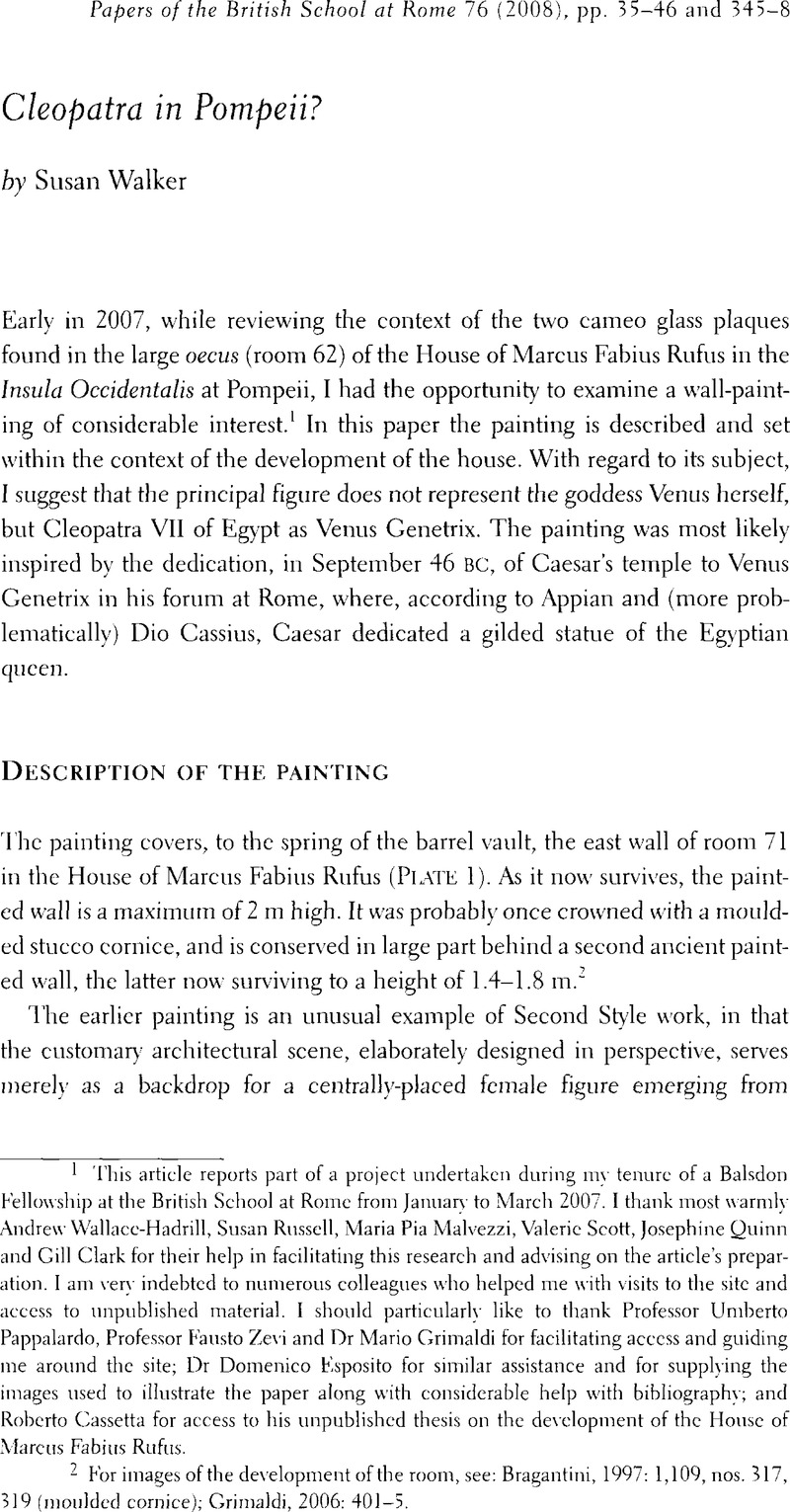Crossref Citations
This article has been cited by the following publications. This list is generated based on data provided by Crossref.
Carroll, Maureen
2010.
Exploring the sanctuary of Venus and its sacred grove: politics, cult and identity in Roman Pompeii.
Papers of the British School at Rome,
Vol. 78,
Issue. ,
p.
63.
Kayalis, Takis
2024.
Cavafy's Hellenistic Antiquities.
p.
101.
Tatum, W. Jeffrey
2024.
A Noble Ruin.



